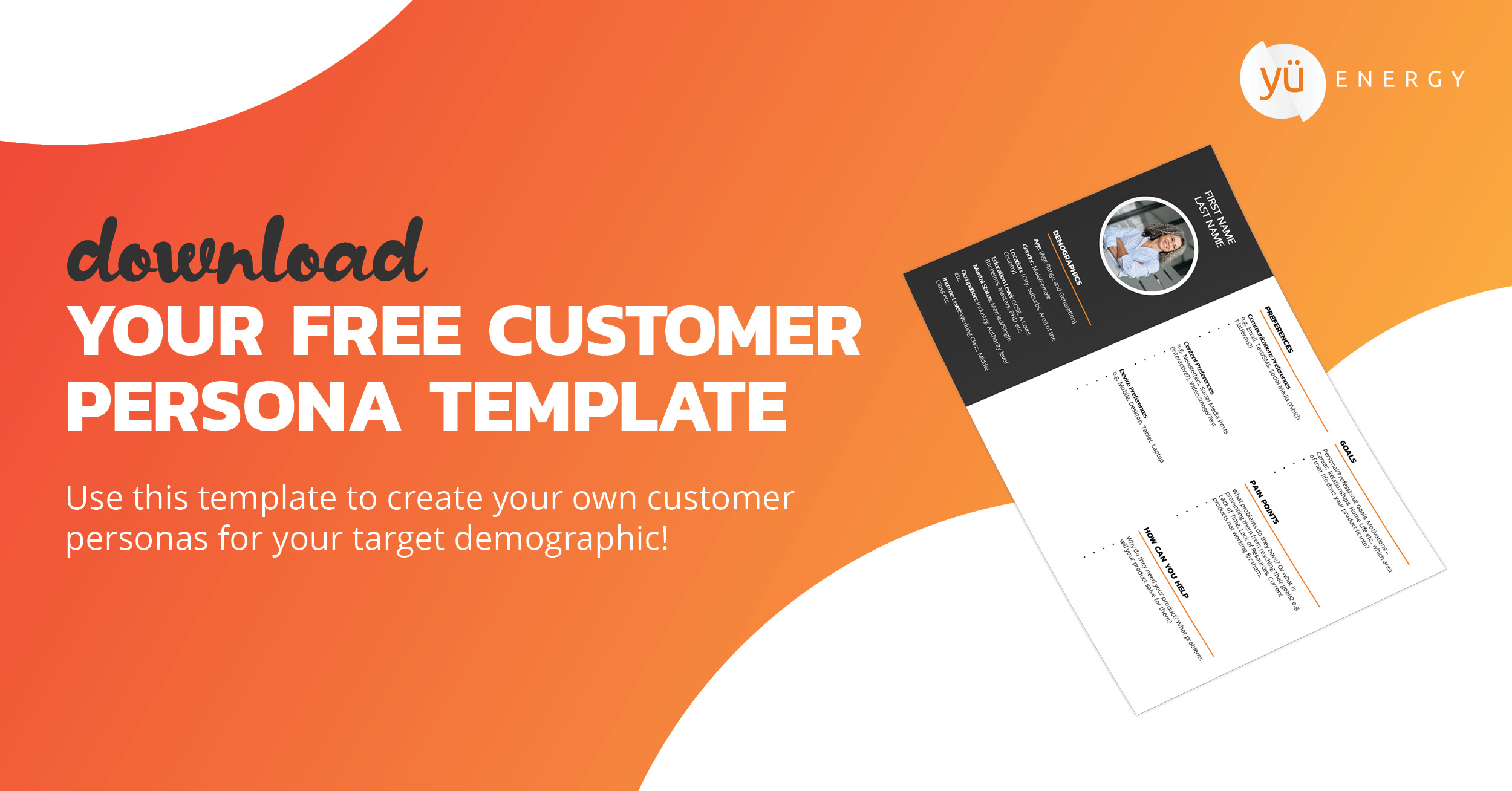Introduction
When it comes to creating effective marketing, finding your target customer demographic is essential. Our guide walks you through the importance of understanding customer demographics, offering insights on how to identify them, so you can tailor your marketing strategies to resonate with your audience. We also provide a step-by-step approach to creating a detailed customer persona, including a free customer persona template to help you better understand and engage with your customers.
What is a Customer Demographic?
A customer demographic is a set of characteristics that define a group of people, such as age, gender, income, education, location, and occupation. By knowing your customer demographic, you can identify your target audience and tailor your marketing strategies to better meet the needs and preferences of specific customer groups.
You can use these demographics to segment your customers based on similarities in characteristics, so you can target specific groups of people with different marketing campaigns.
When segmenting your target customer demographics, you may split them into the following categories:
- Demographic segmentation – based on demographics such as age, gender, ethnicity, income, education level, occupation and family size/structure
- Psychographic segmentation – factors such as lifestyle, personality traits, interests, values and beliefs
- Geographic segmentation – where the customer is based e.g. country, region, city and whether they live in an urban or rural area
- Behavioural segmentation – Based on customers shopping behaviour such as buying patterns and brand loyalty
- Needs-based segmentation – taking into consideration the customer’s goals – whether personal or professional – and pain points/problems they want to solve

Why Are Customer Demographics Important?
Identifying both your current and target customer demographics is a great way to improve and tailor your marketing and customer service strategies. This can help to create more personalised interactions between your business and your customers, which can foster customer loyalty and retention.
In fact, according to a study by Epsilon, 80% of consumers said they were more likely to make a purchase when a brand offers them personalised experiences.
Understanding your customers will also help you to understand how your product is being used by consumers, so you can improve customer experience, leading to higher sales and more efficient marketing strategies.
How to Find Your Target Customer Demographics
Finding your target customer demographics will involve gathering and analysing data to identify the key characteristics of the people most likely to buy your product or service. This includes both your current customers and any new demographics that you want to target.
Tools such as Google Analytics and social media insights for platforms such as Facebook, Instagram and X can be valuable tools when gathering your data. Google Analytics can show you the age, gender and location of people who visit your websites, as well as their behaviours e.g. which pages they visit and how they interact with your site. Similarly, social media insights tools can offer detailed data on your followers such as age, gender, interests, and geographical location.
You should also consider your products and services in relation to the types of people who are buying and using them. Look at buying patterns such as frequency, repeat purchases and the method of purchase i.e. online or in person and ask yourself what kinds of problems or needs your customers have, that your product can solve.
If you have a specific target customer demographic in mind, you can also conduct market research to find out more about what will make them buy your product. This may involve surveys, polls, or even interviews and focus groups if you have the resources to do so.

How to Expand Your Target Customer Demographic
- Diversify your products – Consider expanding your product line or services to meet the needs of different demographics. For example, if your primary audience is young adults, you may want to explore catering to an older target customer demographic. This could involve modifying existing products or creating entirely new ones that appeal to a broader audience.
- Create personalised marketing strategies – Develop personalised marketing campaigns that speak directly to the interests and needs of different demographics. Utilise customer segmentation to craft targeted messages that resonate with specific groups, increasing engagement.
- Offer Promotions and Discounts: Attract new customers with promotions and discounts designed for specific demographics. For example, students may appreciate special offers that make your products more accessible. This not only incentivises buying your product but can also encourage word-of-mouth referrals too.
- Collaborate with Influencers: Partnering with influencers who have a following in your target customer demographic can be an effective way to expand your reach. Choose influencers who align with your brand values and can authentically promote your products to their audience, helping you tap into new customer segments.
Choosing the Right Channels for Your Target Customer Demographic
So, you’ve chosen your demographic, and now it’s time to create a marketing campaign. The best approach to take will depend on who you are intending to reach, as different audiences prefer different platforms. For example, younger audiences (18-34) are more likely to engage with platforms like Instagram, TikTok, and YouTube, on mobile devices, whilst older demographics may respond better to Facebook or email marketing using desktop computers.
Similarly, when creating brand communications, the channel you choose matters. According to Forbes, Millennials and Boomers prefer to receive communication via email, with Gen Z favouring social media.
The same study also found that Gen X are the most receptive to loyalty schemes, followed closely by Millennials.
Next, consider their behaviours and shopping habits. Are they more likely to search for products on Google, shop on mobile apps, or engage with influencer recommendations? If you’re targeting professionals or B2B customers, LinkedIn could be a key channel.
By choosing the right marketing channels based on your customer demographics, you can boost engagement and conversion rates whilst honing in on your target customer demographic.
Tip – Remember to monitor engagement when trying something new and continuously take onboard feedback!

How to Create a Persona for Your Target Customer Demographics
A user persona is a semi-fictional representation of your ideal customer, based on key characteristics such as demographics, behaviours, goals and pain points. They are great tools for marketers, product developers, and business owners, helping you to better understand your audience when developing new products, services and marketing strategies.
When creating your customer persona, ask yourself who they are and what their main goals and problems are.
Start your persona using the steps below:
- Conduct Research: Gather data from surveys, customer interviews, and analytics to understand your audience’s demographics, behaviours, and preferences.
- Identify Key Demographics: Define age, gender, income, location, occupation, and other relevant details.
- Add Psychographics: Outline their goals, challenges, values, and interests.
- Examine Behaviour Patterns: Understand their shopping habits, decision-making process, and preferred communication channels.
Once you’ve done your research, it’s time to give your persona a story, with a name, background, and a summary of how they interact with your brand.
For example, ‘Tech-Savvy Sarah’ is a 27-year-old single woman living in London. She has a master’s degree and works a full-time office job as a data analyst. She enjoys reading, going out with her friends and keeping up with the latest tech releases. She rents a stylish apartment and lives alone with her cat. She leads a busy and active lifestyle and as she is out at the office all day, she feels bad leaving her cat on his own and wants to be able to check in on him throughout the day.
As a Gen Z-Millennial cusp, she does a lot of her shopping online and uses platforms such as Instagram and TikTok, as well as subscribing to email newsletters from her favourite brands.
‘Tech-Savy Sarah’ would be a great customer persona for a pet tech company, selling products like pet cams, automatic feeders and self-play pet toys, and a good way to target Sarah would be through social media ads, such as Instagram Reels.
Get Your Free Customer Persona Template

If you want to create your own persona for your target customer demographic, download our free template!
Whether you’re a small business owner, a marketer, or part of a larger team, our template is designed to help you create effective customer personas, so you can level up your marketing game.
Looking for More Business-Boosting Tips?
Why not download our free Marketing Made Easy eBook? Our Marketing Made Easy Series is designed to help businesses of all sizes and industries step up their marketing, with handy tips on creating compelling newsletters, crafting a business website, and much more.

 0115 975 8258
0115 975 8258

